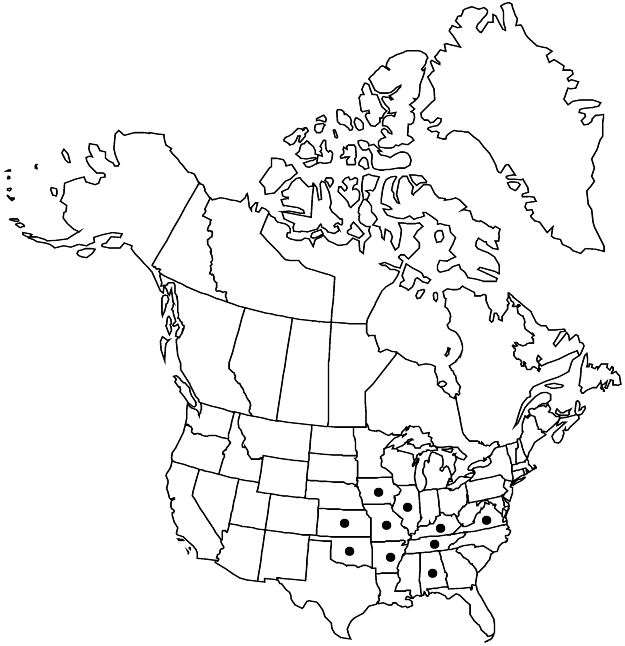Malvastrum hispidum
Annuaire Conserv. Jard. Bot. Genève 20: 129. 1917.
Herbs, annual, (0.05–)0.1–0.5(–0.8) m, bushy-branched. Stems erect, sparsely or moderately hairy, hairs appressed, 4(–6)-rayed, normally bilateral and swollen-based. Leaves: stipules persistent, linear, 3–5 × 0.3 mm, apex acuminate; petiole 5–10 mm; blade lanceolate to linear-lanceolate, unlobed, 2.5–3.5 × 0.5–1 cm, not much reduced distally, at least 3 times longer than wide, 3–4 times longer than petiole, base rounded to cuneate, margins sparsely serrate-dentate, apex acute, surfaces stellate-hairy, hairs scattered, appressed, (2–)4–6(–8)-rayed, reduced to simple hairs at margins. Inflorescences axillary solitary flowers in distal 1/2 of plant; floral bracts absent. Pedicels 2–4(–10) mm, to 5–8(–17) mm in fruit; involucellar bractlets free from or basally adnate to calyx for 0.5–1 mm, narrowly lanceolate to linear, subfalcate, 3–7 × 0.3–0.6 mm, 1/2 times length of calyx lobes, apex acuminate. Flowers: calyx connate 2/5–1/2 its length, broadly campanulate, distinctly plicate-angular due to prolonged reniform-auriculate lobe bases, 5–7 mm, accrescent to 8–10 mm, somewhat inflated in fruit, surface hairy, hairs both 4–6-rayed, stellate and simple to 2-rayed marginal; corolla wide-spreading, yellow to pale yellow-orange, 5 mm diam., petals asymmetrically obovate, shallowly lobed, 3–4.5 × 2–3.5 mm, subequal to or exceeding calyx by 0.5–1 mm; staminal column 1–1.6 mm, glabrous; style 5- or 6-branched. Schizocarps 6–8 mm diam.; mericarps readily shed from calyx, 5 or 6, 2.6–3.5 × 2.6–3.5 × 1.5 mm, dehiscent, separating into 2 valves, short-notched, mucro absent, hairy, hairs both minute, simple and longer erect, simple, to 1 mm on proximal-apical surface, sides rounded, smooth and unribbed. Seeds 2–2.5 mm. 2n = 36.
Phenology: Flowering summer; frost-sensitive.
Habitat: Open limestone and dolomite outcrops, cedar glades, prairies, shallow soil
Elevation: 50–300 m
Distribution

Ala., Ark., Ill., Iowa, Kans., Ky., Mo., Okla., Tenn., Va.
Discussion
Malvastrum hispidum is local in distribution. The seeds are very thick-walled and persist in the seed bank for many years, but the plants survive only in areas with little other vegetation and will disappear when there is much competition from other species. It appears to benefit from occasional fires. While it is clearly related to the other species of the genus, its dehiscent mericarps, narrow leaves, distribution, and strictly annual duration easily distinguish it. Open flowers are only infrequently seen; most appear to be cleistogamous. Its origins and exact relationships are somewhat obscure.
Collections of the species from Iowa are historic; no recent ones are known from there. It is endangered in Illinois and Virginia. There are very few recent collections from Kentucky. Its status in Arkansas, Kansas, and Oklahoma is uncertain. In Alabama it is quite rare and occurs only in a few cedar glades near the Tennessee border. The species appears to be most secure in Missouri and Tennessee.
Selected References
None.